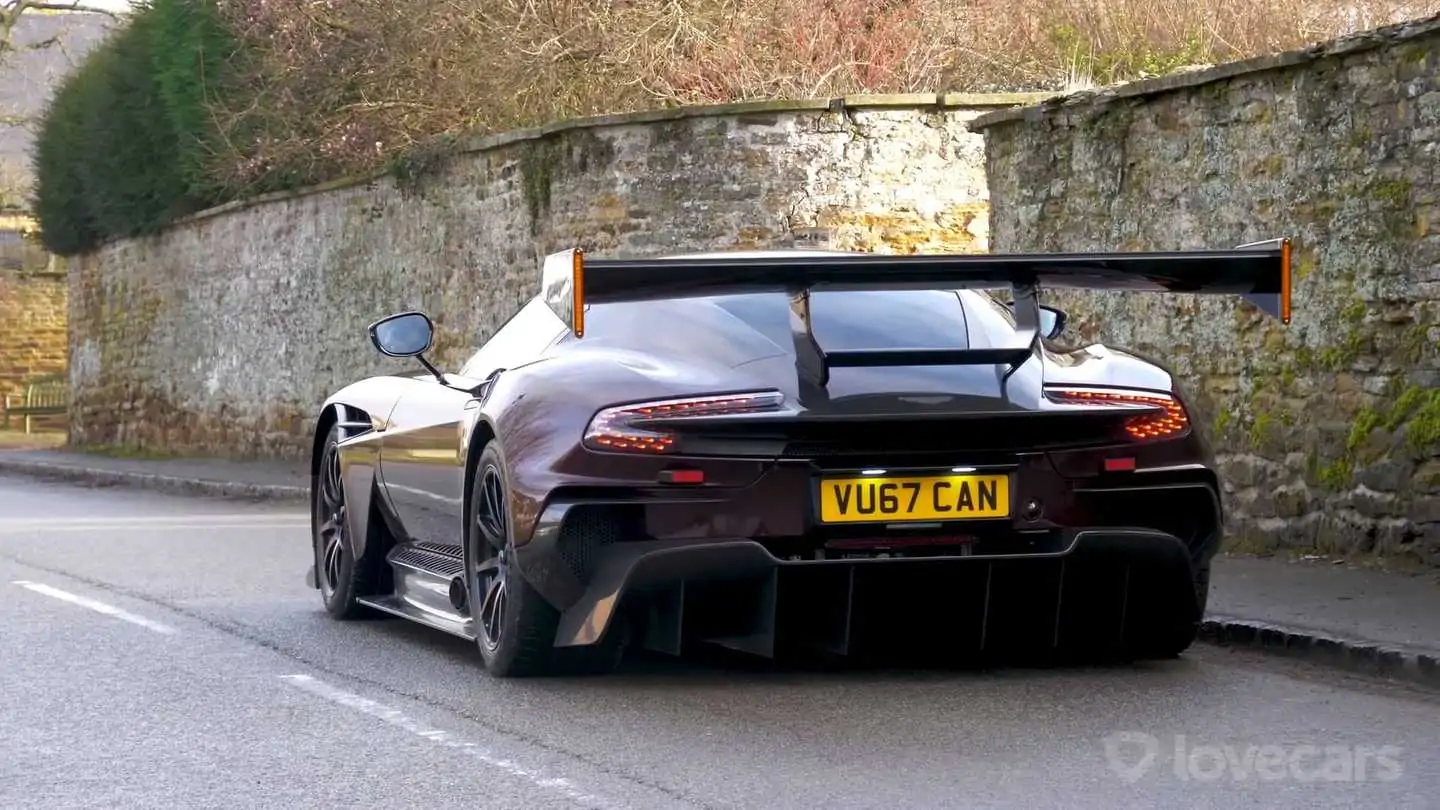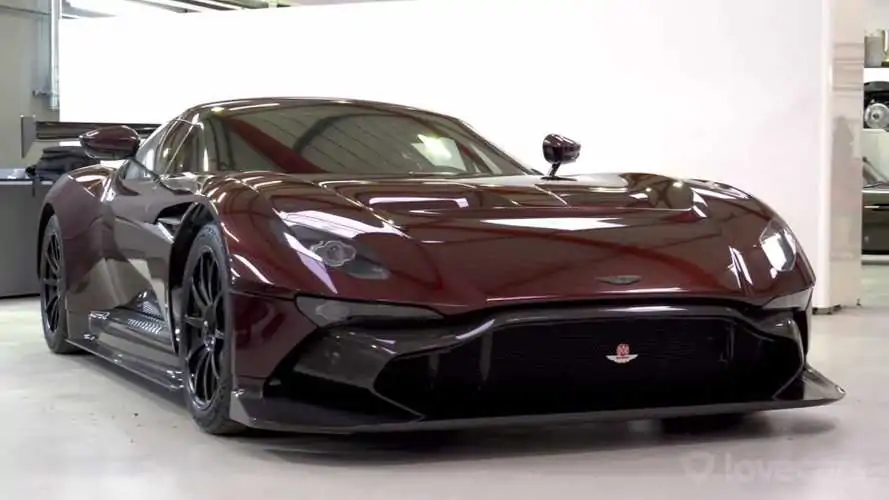
It is obvious that the Vulcan was designed as a pure race car and that a lot of effort went into making it street-legal.
Aston Martin built 24 Vulcans, but only one can legally drive on public roads. The street legal Vulcan was converted by RML Group, with full support of Gaydon. To be registered for road use, it had to go through a variety of modifications. The obvious modifications include a pair DB11-sourced headlights and DB11 side mirrors. But these are just the beginning.
Other modifications worth noting are the taillight covers and Michelin tires, windscreen wiper with washer, and central locking. RML Group made some modifications to the front splitter to make it road-legal. It is now shorter than ever before. The hood also had to be modified. At the back, there are the mandatory lights and the license plate.
The race car’s sharp edges are covered to protect safety. Therefore, the steering wheel has extra padding. RML Group modified both the seats to improve visibility, but it’s not great considering that the Vulcan does not have a rear window.
There are also the subtle changes that you don’t see. For example, the V12 naturally-aspirated engine needed to be remapped in order to comply with emissions laws. This required the installation of a new exhaust. To make it easier to use, engineers had to adjust the cooling system and change the gear ratios. To provide a more comfortable ride, a soft suspension set was required. A very useful suspension lift system was also installed.
The Aston Martin Vulcan, while still a thoroughbred racing car, can now be driven home by its owner from the circuit. If he changes his mind, the V12 monster will be able to return to its track-only specifications.
